
How to Use MP1584: Examples, Pinouts, and Specs
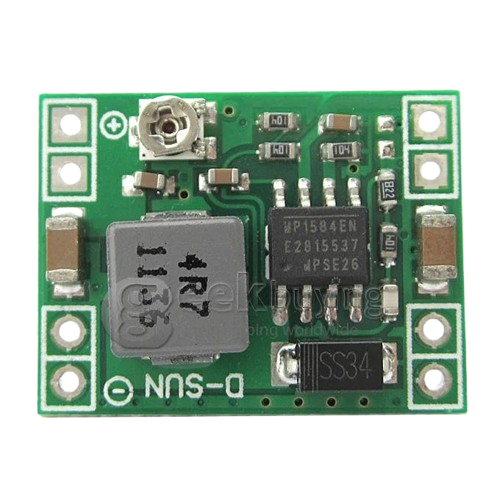
 Design with MP1584 in Cirkit Designer
Design with MP1584 in Cirkit DesignerIntroduction
The MP1584 is a step-down (buck) voltage regulator designed to efficiently convert a higher input voltage to a lower output voltage. It is widely used in applications requiring compact, high-efficiency power conversion. The MP1584 features a wide input voltage range, adjustable output voltage, and built-in protection mechanisms such as overcurrent protection and thermal shutdown, making it a reliable choice for various electronic projects.
Explore Projects Built with MP1584
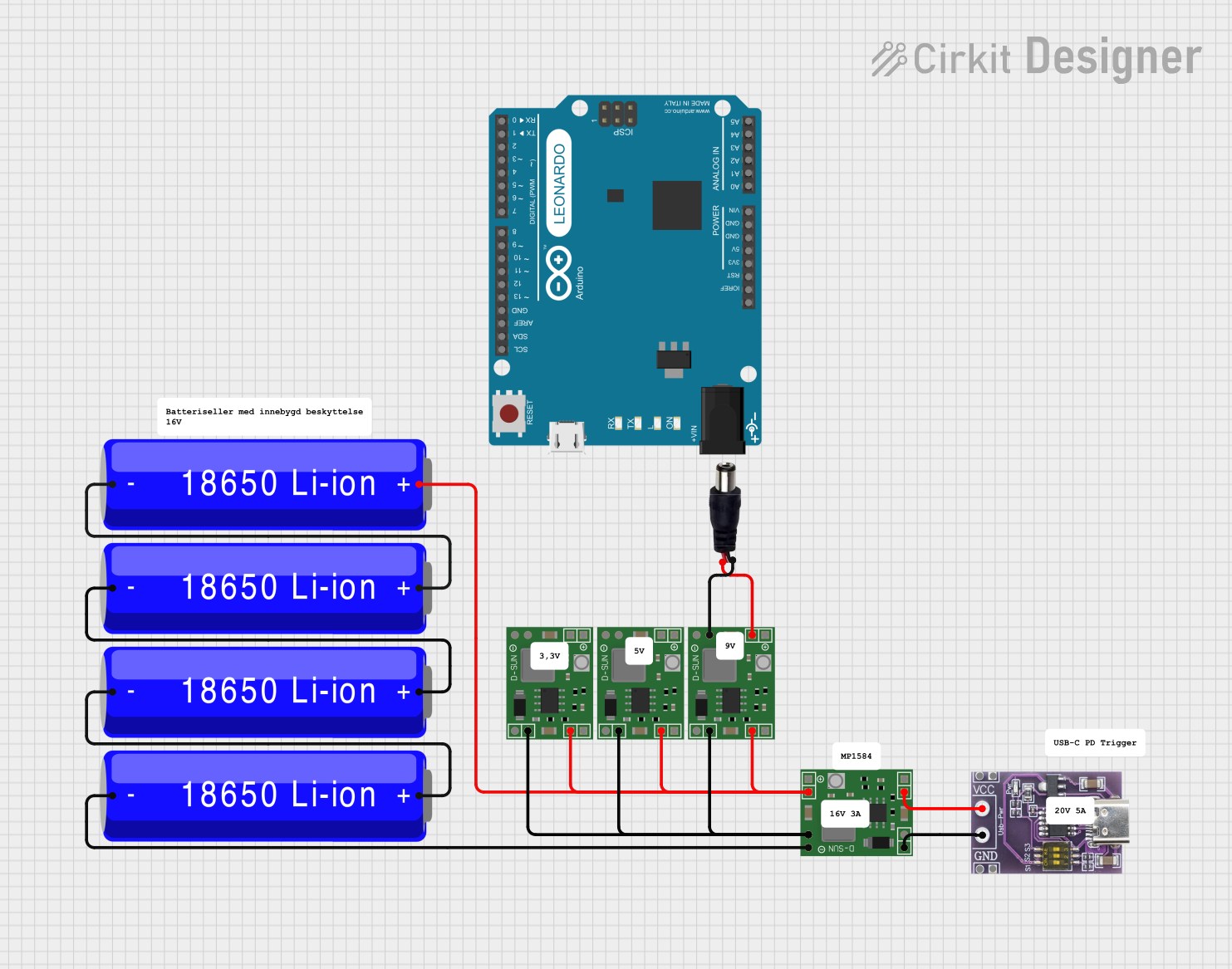
 Open Project in Cirkit Designer
Open Project in Cirkit Designer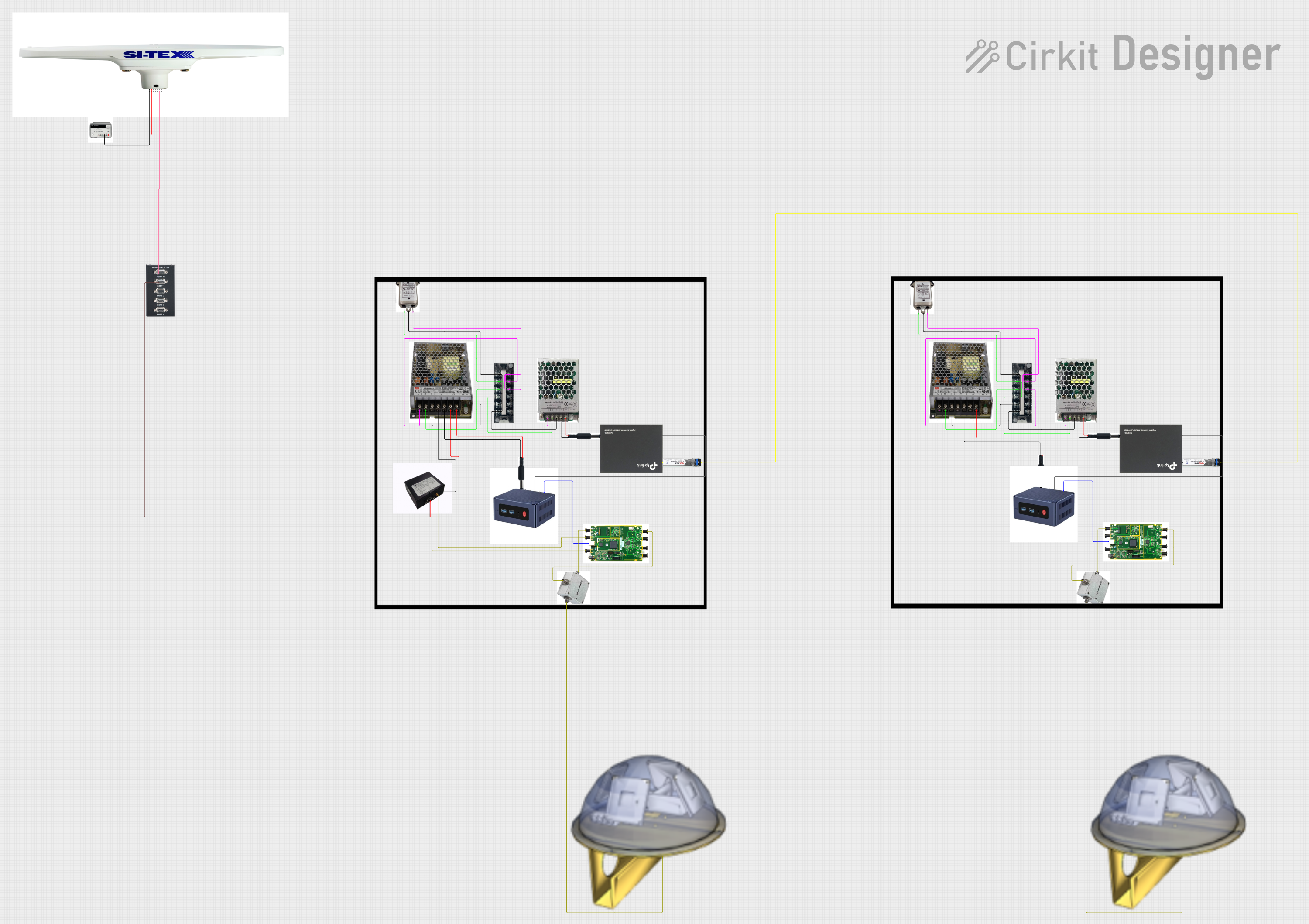
 Open Project in Cirkit Designer
Open Project in Cirkit Designer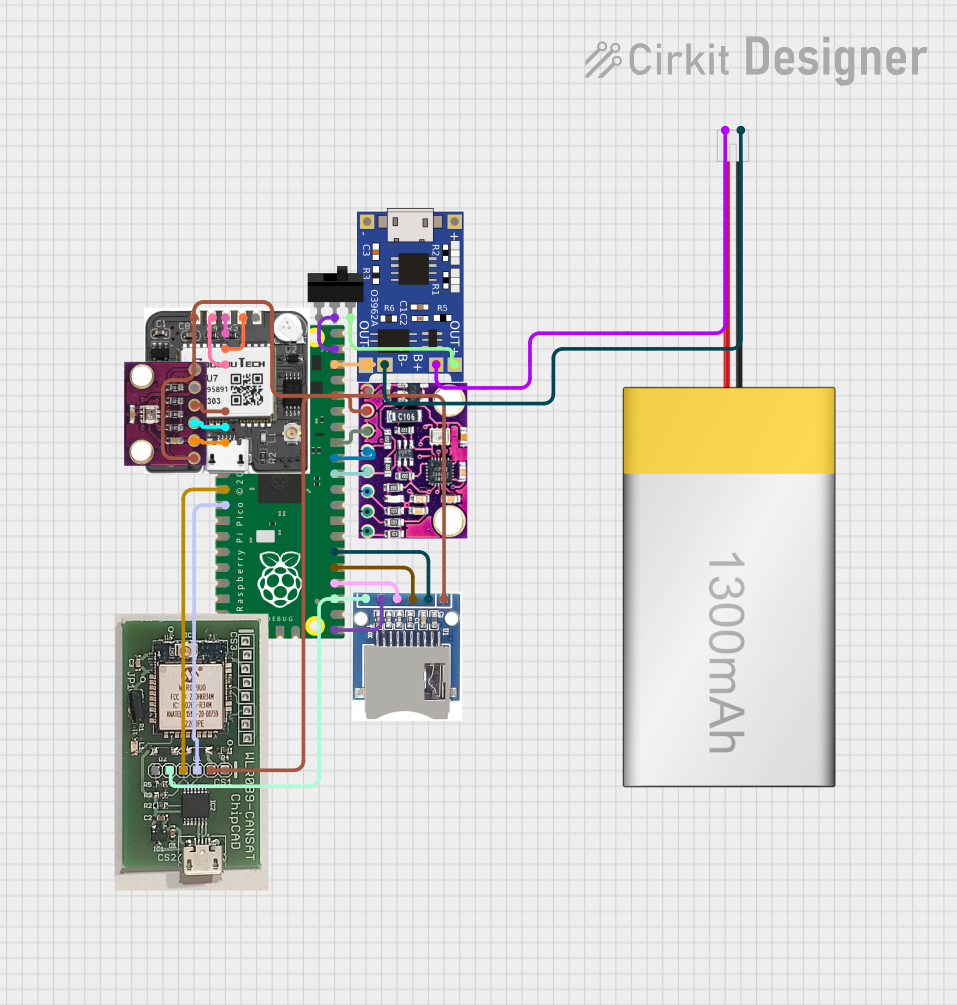
 Open Project in Cirkit Designer
Open Project in Cirkit Designer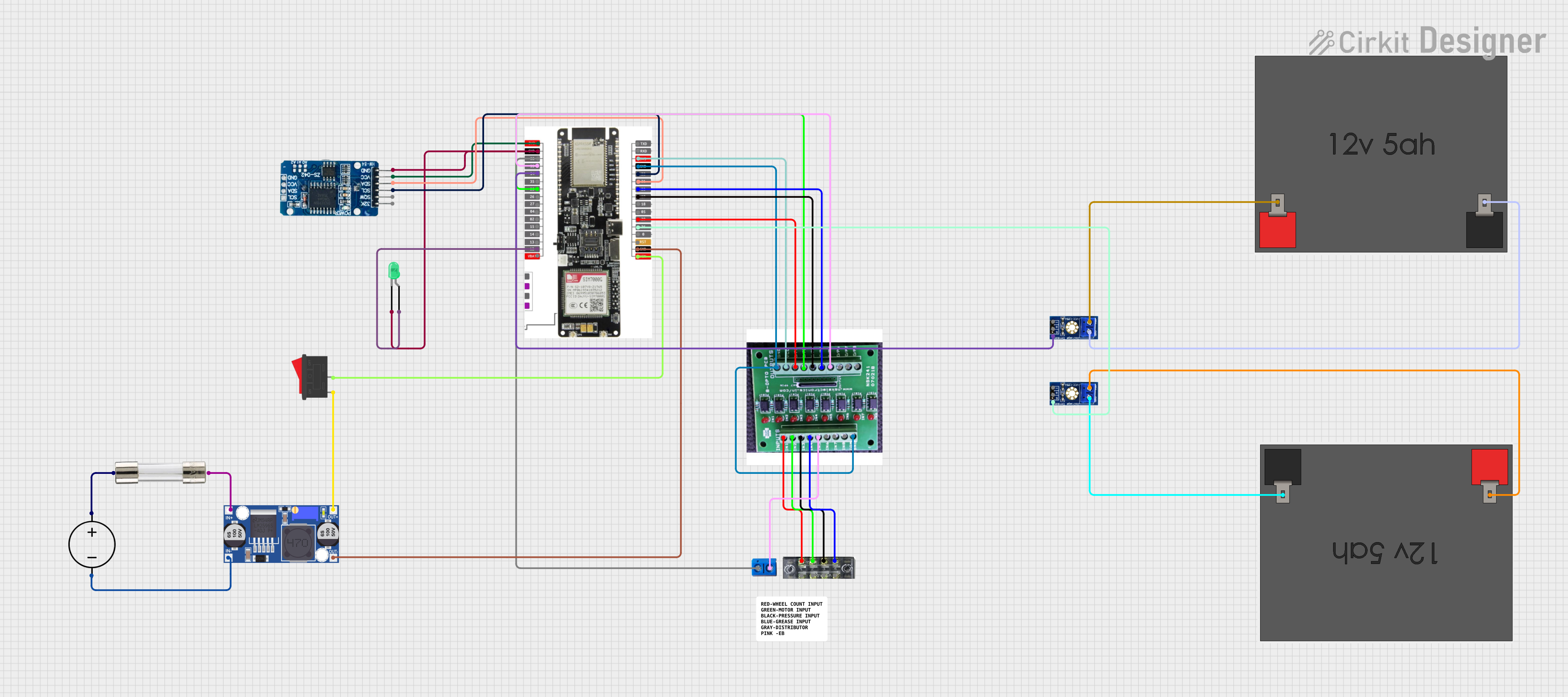
 Open Project in Cirkit Designer
Open Project in Cirkit DesignerExplore Projects Built with MP1584

 Open Project in Cirkit Designer
Open Project in Cirkit Designer
 Open Project in Cirkit Designer
Open Project in Cirkit Designer
 Open Project in Cirkit Designer
Open Project in Cirkit Designer
 Open Project in Cirkit Designer
Open Project in Cirkit DesignerCommon Applications and Use Cases
- Powering microcontrollers and development boards (e.g., Arduino, ESP32)
- Battery-powered devices
- LED drivers
- Industrial control systems
- Consumer electronics requiring regulated DC power
Technical Specifications
Key Technical Details
| Parameter | Value |
|---|---|
| Input Voltage Range | 4.5V to 28V |
| Output Voltage Range | 0.8V to 20V (adjustable via potentiometer) |
| Output Current | Up to 3A |
| Efficiency | Up to 92% |
| Switching Frequency | 340 kHz |
| Operating Temperature | -40°C to +85°C |
| Protection Features | Overcurrent, thermal shutdown |
| Package Type | SMD (Surface-Mount Device) |
Pin Configuration and Descriptions
| Pin Name | Pin Number | Description |
|---|---|---|
| VIN | 1 | Input voltage pin (4.5V to 28V) |
| GND | 2 | Ground pin |
| VOUT | 3 | Regulated output voltage pin (0.8V to 20V) |
| FB | 4 | Feedback pin for output voltage adjustment |
| EN | 5 | Enable pin (active high) |
| SW | 6 | Switching node (connects to inductor) |
Usage Instructions
How to Use the MP1584 in a Circuit
- Input Voltage: Connect the input voltage (4.5V to 28V) to the
VINpin. Ensure the input voltage is within the specified range. - Output Voltage Adjustment: Use the onboard potentiometer to adjust the output voltage. Measure the output voltage at the
VOUTpin using a multimeter while turning the potentiometer. - Inductor and Capacitor Selection: Use an appropriate inductor and capacitors as per the datasheet recommendations to ensure stable operation.
- Enable Pin: Connect the
ENpin to a high logic level (e.g., VIN) to enable the regulator. Pull it low to disable the output. - Load Connection: Connect the load to the
VOUTpin and ensure the load current does not exceed 3A.
Important Considerations and Best Practices
- Heat Dissipation: The MP1584 can generate heat during operation, especially at high currents. Use proper heat dissipation techniques, such as adding a heatsink or ensuring good airflow.
- Input Capacitor: Place a low-ESR capacitor (e.g., 10µF) close to the
VINpin to reduce input voltage ripple. - Output Capacitor: Use a low-ESR capacitor (e.g., 22µF) at the
VOUTpin to stabilize the output voltage. - Inductor Selection: Choose an inductor with a current rating higher than the maximum load current and a low DC resistance (DCR) for better efficiency.
Example: Connecting MP1584 to an Arduino UNO
The MP1584 can be used to power an Arduino UNO by stepping down a higher voltage (e.g., 12V) to 5V. Below is an example circuit and Arduino code:
Circuit Connections
| MP1584 Pin | Connection |
|---|---|
| VIN | 12V power source |
| GND | Ground of the power source |
| VOUT | 5V input pin of the Arduino UNO |
| GND | Ground of the Arduino UNO |
Arduino Code Example
// Example code to blink an LED using Arduino UNO powered by MP1584
// Ensure the MP1584 output is set to 5V before connecting to Arduino
const int ledPin = 13; // Built-in LED pin on Arduino UNO
void setup() {
pinMode(ledPin, OUTPUT); // Set LED pin as output
}
void loop() {
digitalWrite(ledPin, HIGH); // Turn the LED on
delay(1000); // Wait for 1 second
digitalWrite(ledPin, LOW); // Turn the LED off
delay(1000); // Wait for 1 second
}
Troubleshooting and FAQs
Common Issues and Solutions
No Output Voltage
- Cause: The
ENpin is not connected or is pulled low. - Solution: Ensure the
ENpin is connected to a high logic level (e.g., VIN).
- Cause: The
Output Voltage is Unstable
- Cause: Insufficient input or output capacitance.
- Solution: Add low-ESR capacitors close to the
VINandVOUTpins.
Excessive Heat
- Cause: High load current or poor heat dissipation.
- Solution: Reduce the load current or improve heat dissipation with a heatsink or better airflow.
Incorrect Output Voltage
- Cause: Potentiometer not adjusted correctly.
- Solution: Use a multimeter to measure and adjust the output voltage.
FAQs
Q: Can the MP1584 be used with a 3.3V output?
A: Yes, the MP1584 can be adjusted to output 3.3V by turning the potentiometer and measuring the output voltage.
Q: What is the maximum input voltage for the MP1584?
A: The maximum input voltage is 28V. Exceeding this value may damage the component.
Q: Can the MP1584 power a Raspberry Pi?
A: Yes, the MP1584 can step down a higher voltage (e.g., 12V) to 5V to power a Raspberry Pi. However, ensure the current demand does not exceed 3A.